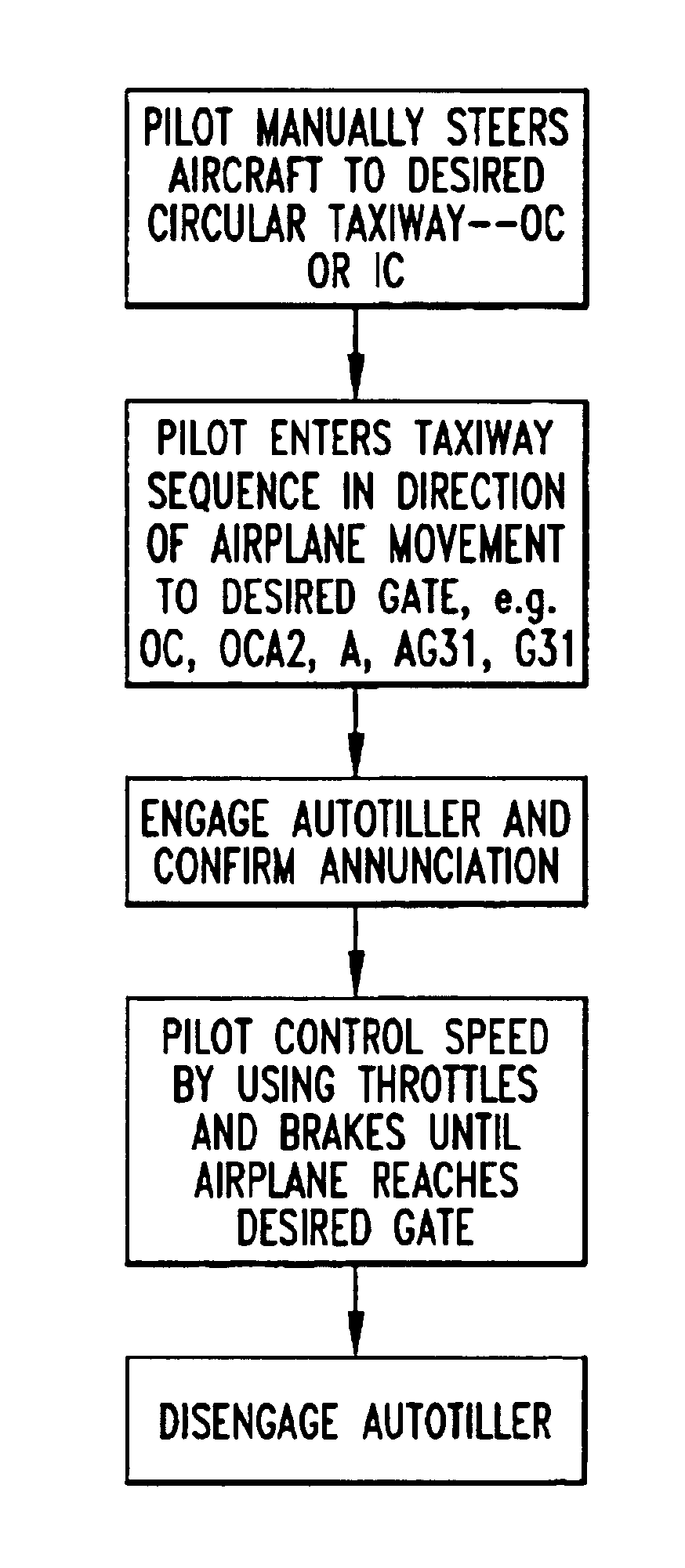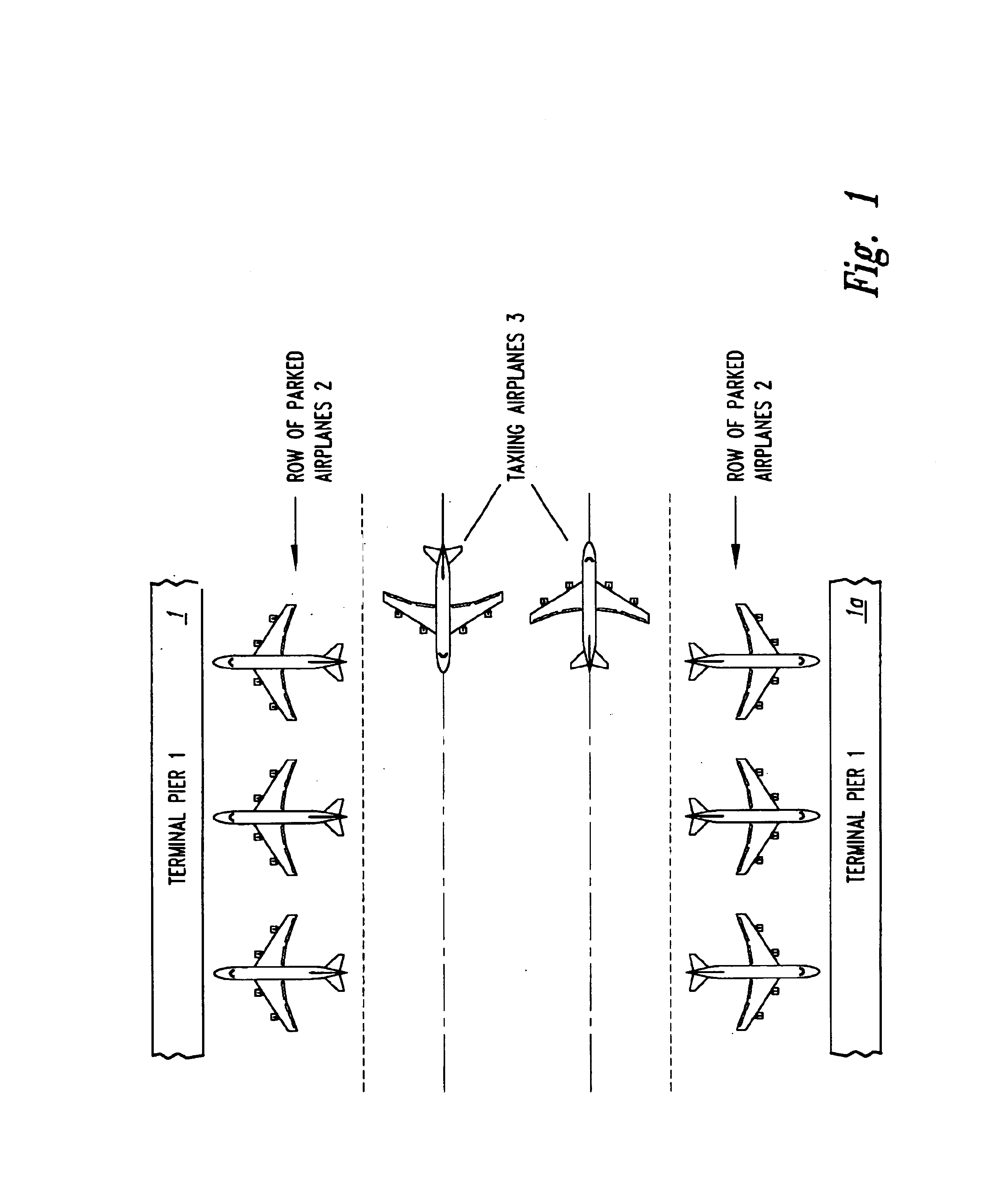Autotiller control system for aircraft
a control system and aircraft technology, applied in the direction of instruments, navigation instruments, using reradiation, etc., can solve the problems of airline lag in achieving the effect of significant logistical and operational problems, and inability to keep up with the increasing traffic volume, etc., to maximize the precision of the host aircraft maneuvering, increase the size, and increase the effect of siz
- Summary
- Abstract
- Description
- Claims
- Application Information
AI Technical Summary
Benefits of technology
Problems solved by technology
Method used
Image
Examples
Embodiment Construction
[0062]FIGS. 1 and 2 illustrate application of the autotiller concept to a representative airport situation. FIG. 1 shows a typical airport situation, with two terminal piers 1 flanking a paved area accommodating two rows of parked airplanes 2 and dual taxilanes for permitting two taxiing airplanes 3 to pass each other without having to stop or swerve to avoid risking wingtip collision. Typical operational separations are nose-to-terminal face clearance of 20′, moving wingtip-to-parked airplane tail clearance of 30′, moving wingtip-to-moving wingtip clearance of 35′, and parked wingtip-to-parked wingtip clearance of 25′. Depending on the airport, airplane size, class, and airline particulars, these clearance criteria are varied somewhat.
[0063]FIG. 2 shows a similar airport scenario, with larger autotiller equipped parked airplanes 2A and taxiing airplanes 3A in the same facilities designed for smaller non-autotiller equipped airplanes. The above-mentioned clearances can now be reduce...
PUM
 Login to View More
Login to View More Abstract
Description
Claims
Application Information
 Login to View More
Login to View More - R&D
- Intellectual Property
- Life Sciences
- Materials
- Tech Scout
- Unparalleled Data Quality
- Higher Quality Content
- 60% Fewer Hallucinations
Browse by: Latest US Patents, China's latest patents, Technical Efficacy Thesaurus, Application Domain, Technology Topic, Popular Technical Reports.
© 2025 PatSnap. All rights reserved.Legal|Privacy policy|Modern Slavery Act Transparency Statement|Sitemap|About US| Contact US: help@patsnap.com



